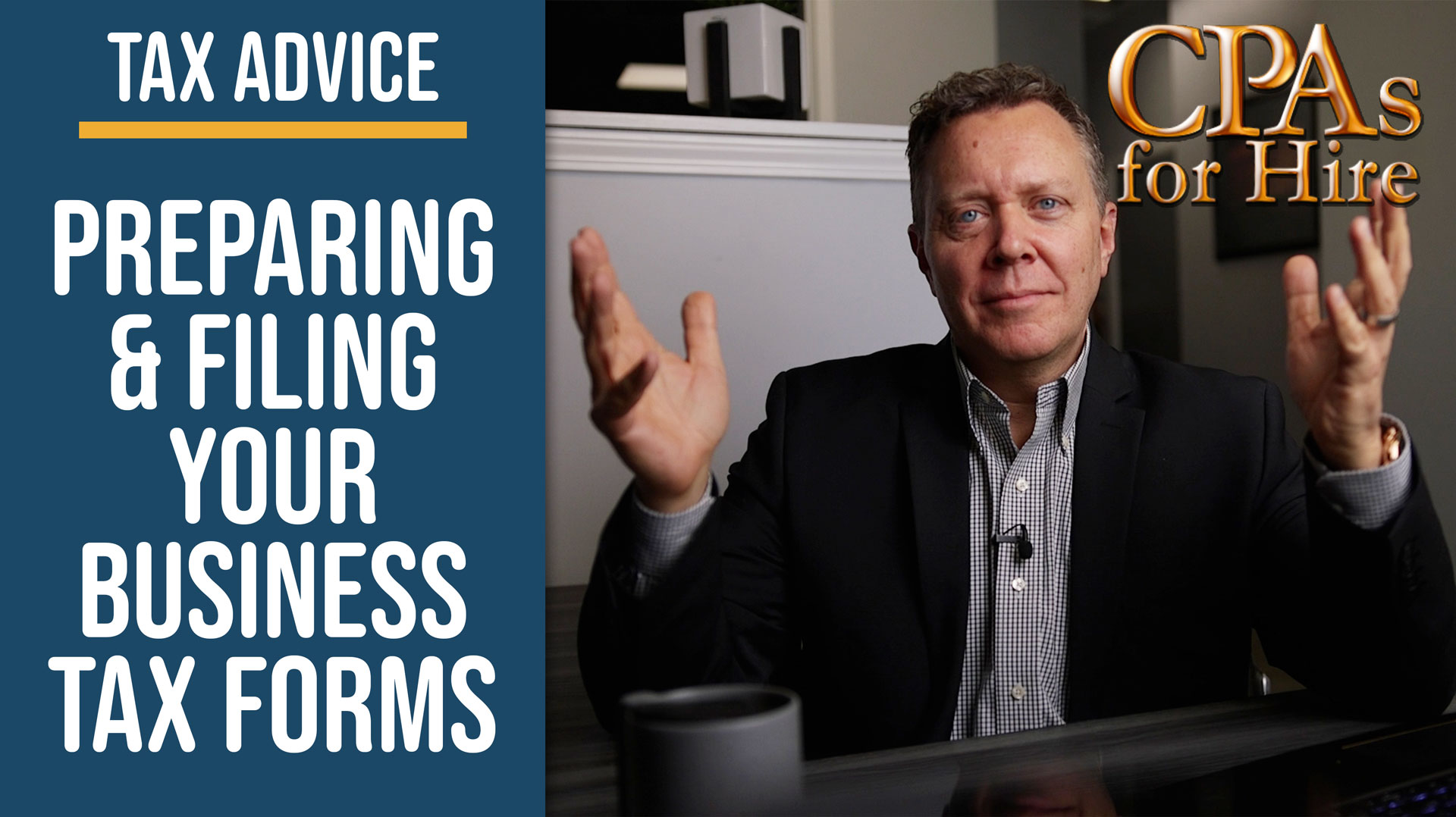☝️ Download our FREE Tax Prep Guide by entering your name and email and you’ll receive instant access right in your inbox.
Get instant Access to our Tax Prep Guide for Business Taxes
What to bring to your CPA - Businss Tax Filing
What a Sole Owner of a business needs to pull together for their CPA for taxes – Schedule C
If you’re the sole owner of a business or have a side hustle with some income, this video is for you.
Today we are going to go over the things you should gather and provide your CPA to get your business tax forms prepared and timely filed, so let’s get organized.
I’m Dennis Fry with CPAs for Hire… As a CPA, we have a list of things we want our sole proprietors and single-member LLC clients to provide us in order to prepare their Schedule C to be attached to their personal tax return.
Let’s first talk about the difference between a sole proprietor and a single-member LLC.
A sole proprietor is an individual operating a business under their name and social security number, or under a registered fictitious name and Federal Employer Identification Number, or FEIN.
If this is you, provide your CPA the Registration of Fictitious Name filed with your state, and the IRS FEIN letter… we like to have all your official papers for our records.
A single-member LLC is a separate legal entity from the individual, but is disregarded as a separate legal entity by the IRS… Confusing right? To simplify, single-member LLCs are treated the same as sole proprietors in the eyes of the IRS.
If this is you, provide your CPA the Articles of Organization filed with your state, and the IRS FEIN letter.
Next, your CPA will want your income and expenses summarized by category in the form of an income statement, or profit and loss statement.
This can be accomplished in several ways, but the 2 most commonly used are accounting software, such as QuickBooks Online, or Microsoft Excel.
The end goal is to categorize and summarize all your business income and expense transactions for the year using categories that align well with Schedule C, the tax reporting form.
Google “Schedule C” and pull the official form from the IRS website to use as a guide… If a category you have isn’t listed or doesn’t align with any on the form, feel free to make one up.
You’re CPA can add it as an Other Income or Other Expense categories.
If you’re thinking “This sounds great, but where do I start?”, no problem… Simply pull all your bank and credit card statements for the year that have business-related transactions. This is your inventory, if you will, of transactions that need to be categorized and summarized for the year.
A quick tip for Excel users… most banks and credit cards now give online customers the ability to download transactions by date range directly to an Excel or .csv file, which makes it easy to compile and summarize your data.
If you are Excel challenged, I would encourage learning the basics of Excel from Youtube or have a trusted friend or family member help.
Next, provide your CPA with all the bank and credit card statements you used to support your income and expenses… highlighting personal transactions you intentionally left out. CPAs love transparency… we don’t have as many questions.
Other deductions you may want to consider based on business use
Track business mileage using a smart app such as MileIQ
Consider a reasonable portion of home internet usage for your business.
Consider a reasonable portion of cell phone usage for your business.
If you don’t have a place to go and do your work, provide your CPA your home office area or room sq footage and the total sq footage of your house to take advantage of the simplified method home office deduction
When all complete, provide your CPA the finalized income statement or Excel spreadsheet… DO NOT bring them the shoe box. Keep it in storage, but available for a minimum of 7 years.
If you haven’t already, start this immediately!
Have separate bank and credit card accounts for business and personal.
Only use personal accounts for personal use and business accounts for business use.
To expand, if you are at a store buying groceries and office supplies, split it up and pay separately for each.
Stick to this, and it will keep your CPA happy and their fees down.
Finally, consider QuickBooks Online as a necessary cost of doing business… It usually pays for itself or more by ensuring no deductible expenses are missed.
Look for an upcoming QuickBooks Online video series that will cover all the conveniences and time savings it offers.
Below this video, we have a link to our free guide. Click on the link to download the guide, then print it out to use each year.
At CPAs for Hire, we understand the complexity of filing income taxes… We’re here to guide you through it. We hope you download the guide… See you next time!



